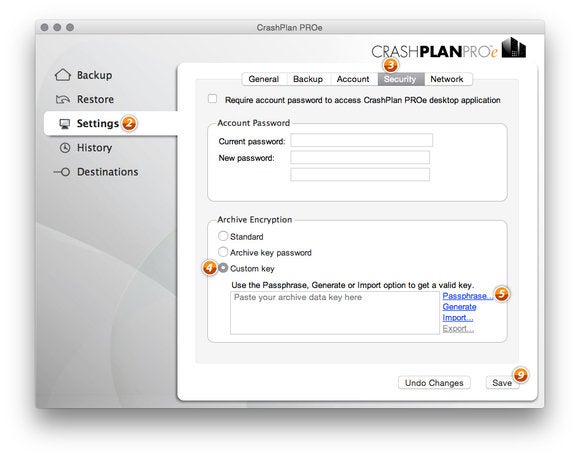Backup basics In this example scenario, CrashPlan is using its default settings and is backing up your user home directory. CrashPlan constantly watches for new and changed files within your home directory with what we call the real-time file watcher. It adds new and changed files to a to-do list. Touchpad Drivers Vista. When you create a document, t he real-time file watcher sees that you've created this document and adds it to the to-do list for backup.
CrashPlan enables admins to easily manage multiple backups at multiple locations. This video explains the struct.

This is what happens when CrashPlan starts backing up your document: • Backup begins with a process called data de-duplication. CrashPlan analyzes a small piece of the file (a block), and checks to see if that block was backed up previously. • If CrashPlan determines that it has already backed up this block, CrashPlan moves on and analyzes the next block. Asset Management Software Open Source Barcode Printer there. • If the block has not yet been backed up, CrashPlan: • Compresses the block to save storage space • Encrypts the block to secure the data • Sends the block to the backup destination Data is throughout this process.
The process repeats for the next block within the file until CrashPlan has analyzed and backed up the entire file. In this way, only unique information is backed up, which saves bandwidth and storage and makes restoring faster. New files and file changes When you make changes to the document, CrashPlan's real-time file watcher sees that the file has changed, and CrashPlan puts the file back into the to-do list. Only the changes are actually sent to the destination, however, not the entire file. The changes are backed up while you work, creating a new version of your document.
In this example, you've added a paragraph (highlighted in red): • CrashPlan's data de-duplication scans the file looking for new blocks of data. • The new (red) data blocks are: • Compressed to save space • Encrypted for security • Transmitted to the backup destination for storage. Occasionally, CrashPlan's data de-duplication needs to re-scan your files to see what's already been backed up. When this happens, it may look like CrashPlan is backing up all your files from the beginning, but it is actually reviewing each block to see what's been backed up already.
If CrashPlan is re-scanning your files, you may see one or more of the following: • Progress is much, much faster than a full initial backup because information that has already been backed up is not re-sent. • All your files are available for restore during this process.
• The amount of space used by your backed up files at the destination is consistent with the size of your file selection and backup completion percentage. To verify the amount of space used: • Select Destinations and choose a destination type (for example, Cloud) • Select a destination and note the Space used.
CrashPlan enables admins to easily manage multiple backups at multiple locations. This video explains the structure of CrashPlan that allows for this redundant yet easy-to-manage backup solution. CrashPlan allows clients to back up to multiple logical Destinations, which can be made up by multiple servers and storage locations. Would you like additional enterprise backup assistance? View the Code42 support page: This page provides enterprise documentation including access to support resources like chat and email support. ----- Connect with us ----- CrashPlan Facebook: CrashPlan Twitter: Code42 LinkedIn:.
Code42 Google+.